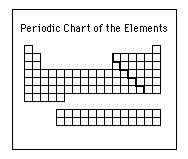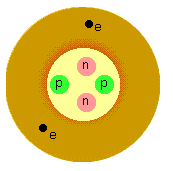
 An important clue that atoms
must have a structure is that there are more than
100 different chemical elements that can be categorized
by their properties.
Direct experimental evidence for the structure within the atom came in
1909-1911 from two young researchers,
Marsden and
Geiger.
The current picture of
the atom was as a uniform permeable ball;
and when they scattered particles off a foil
they expected the particles to pass through with little
deflection. Much to their surprise, a few
particles actually bounced backwards.
An important clue that atoms
must have a structure is that there are more than
100 different chemical elements that can be categorized
by their properties.
Direct experimental evidence for the structure within the atom came in
1909-1911 from two young researchers,
Marsden and
Geiger.
The current picture of
the atom was as a uniform permeable ball;
and when they scattered particles off a foil
they expected the particles to pass through with little
deflection. Much to their surprise, a few
particles actually bounced backwards.

 This led Rutherford to propose that the atom had a
very small and very dense nucleus off which the particles bounced.
Since electrons were already known to
be light and negatively charged, the nucleus must be positively charged
and contain most of the mass of the atom.
During the decade from
1925 to 1935 scientists discussed many theoretical ideas for a
possible structure of the nucleus,
which they tested with experiments.
Finally they identified the building blocks,
-- the proton (p) and the neutron (n).
This led Rutherford to propose that the atom had a
very small and very dense nucleus off which the particles bounced.
Since electrons were already known to
be light and negatively charged, the nucleus must be positively charged
and contain most of the mass of the atom.
During the decade from
1925 to 1935 scientists discussed many theoretical ideas for a
possible structure of the nucleus,
which they tested with experiments.
Finally they identified the building blocks,
-- the proton (p) and the neutron (n).



